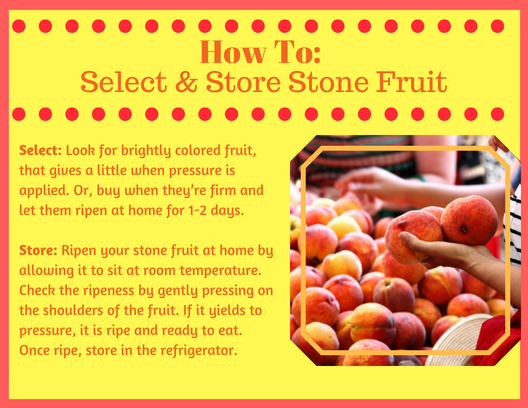[metaslider id=4216]
This past spring, we welcomed a new growing and packing facility to the Sage Fruit Family. With this new warehouse (Vanguard Pride Packing), we added more apples and cherries to our inventory….but, we also added A LOT of Northwest grown stone fruit. So, as much as we enjoyed the summer before, we now have three more reasons to love it – apricots, peaches & nectarines! While our apricot season is already over, we are just getting started with peaches and nectarines.
What is a stone fruit?
Let’s first establish what a stone fruit is. Very simply, it is a fruit that contains a large “stone” (or pit) inside of it. Many people think the stone itself is the seed, however, the stone actually protects the seed, which is found inside of it. (Cherries are also considered stone fruit.)
Our Stone Fruit
Beginning this summer, we have both Conventional and Organic peaches and nectarines available. ALL of our peaches and nectarines are tree-ripened for the sweetest flavor! You might be asking yourself, “What does tree-ripened even mean?” Well, we allow the fruit to remain on the tree as long as possible in order for it to have the opportunity to reach its highest sugar content. We pride ourselves on delivery an exceptional eating experience, and know that the tree-ripening process in the most important aspect of our stone fruit growing. While we pick the fruit when it is still firm, we do not pick it when it’s green. So, you can eat it as soon as you get it home, or let it sit on the counter to soften up a bit.
Types of Peaches
Peaches have a delicate aroma, and a skin that is velvety. Depending on the pit, peaches are classified as either freestone or semi-cling varieties. A freestone peach can have its center stone easily removed from the flesh because it is not attached. In contrast, the center stone of a semi-cling peach is attached to the flesh. Freestone peaches are much more suitable for canning than semi-cling peaches, however there is no noticeable difference in flavor, and both are excellent for eating fresh!
Additionally, the flesh of peaches can be different – we grow both white flesh and yellow flesh varieties.
- White Flesh: Extremely sweet!
- Yellow Flesh: Sweet and well-balanced flavor.
Types of Nectarines
Nectarines and peaches are closely related. However, they do have one visible difference, which is their skin. Peaches are velvety, whereas nectarines are smooth. Their skin is brightly colored gold with hues of ruby and pink throughout. All nectarine varieties are semi-cling.
Like peaches, nectarines can either be yellow flesh or white flesh. The flavor profile of each, also follows similarly to peaches.
- White Flesh: Extremely sweet!
- Yellow Flesh: Sweet and well-balanced flavor.
Availability
- Northwest grown Peaches: Mid-July through September
- Northwest grown Nectarines: Mid July through September
Need help picking out the perfect fruit? Use the guide below!
